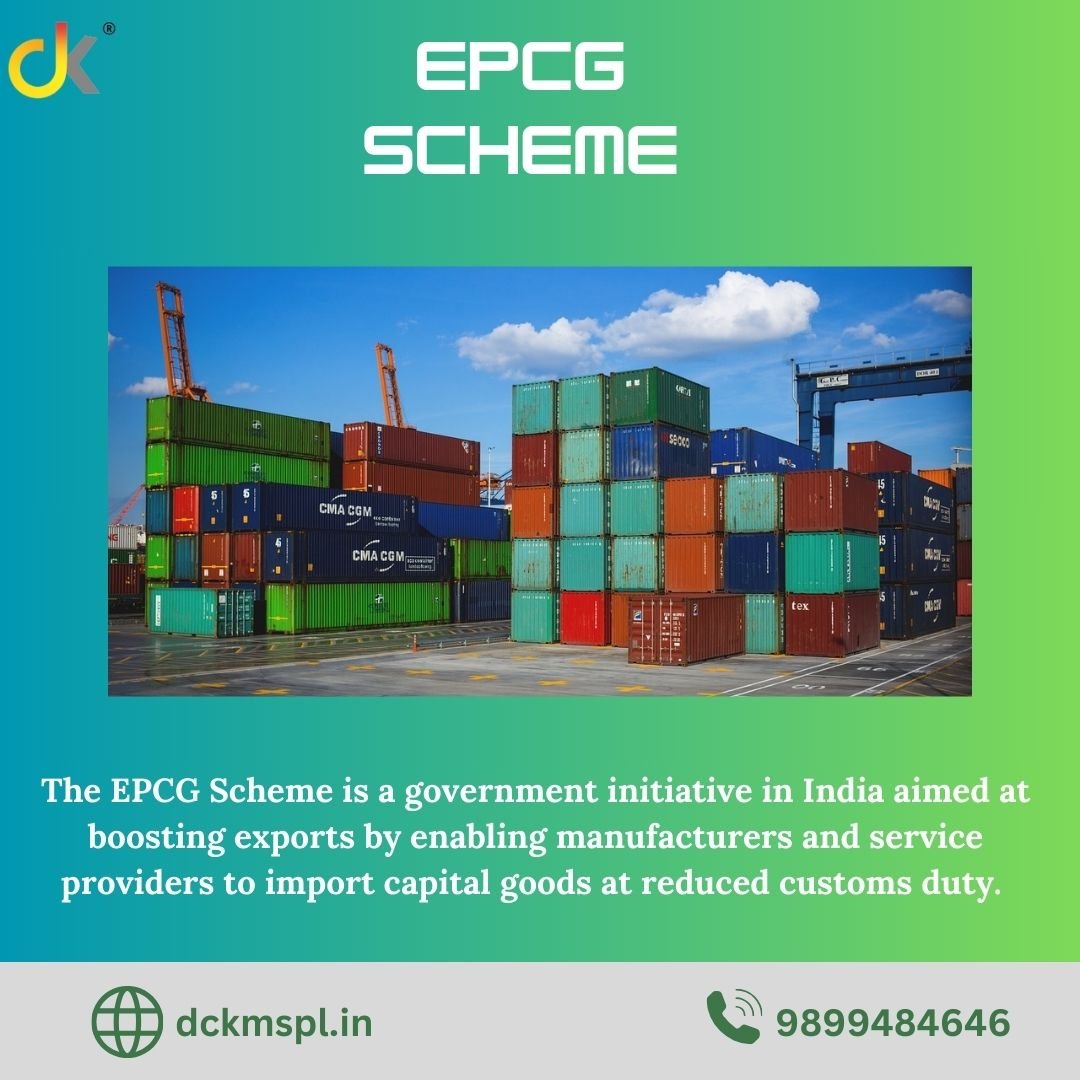The Export Promotion Capital Goods (EPCG) Scheme is a vital initiative introduced by the Government of India to bolster the country’s export capabilities. Administered under the Foreign Trade Policy (FTP), the EPCG Scheme facilitates Indian exporters by enabling them to import capital goods required for production at reduced costs. By offering exemptions on customs duties, the scheme incentivizes businesses to enhance their manufacturing quality and capacity, ultimately contributing to India’s export growth.This detailed guide explores the purpose, benefits, eligibility, conditions, and challenges associated with the EPCG Scheme.
Purpose of the EPCG Scheme
The primary objective of the EPCG Scheme is to enhance the competitiveness of Indian exports by reducing the cost burden associated with procuring high-end capital goods. These goods are essential for manufacturing quality products that meet international standards. By making these goods more affordable, the scheme ensures that Indian industries can compete effectively in the global market.
Key Features of the EPCG Scheme
- Custom Duty Exemption:
Under the EPCG Scheme, businesses can import capital goods without paying basic customs duty, countervailing duty (CVD), or special additional duty (SAD). This applies to both new and second-hand capital goods, excluding certain restricted categories. - Export Obligation:
Beneficiaries of the scheme must fulfill an export obligation (EO) equivalent to six times the duty saved on imported goods. This obligation must be completed within six years from the date of issuance of the EPCG authorization. - Scope of Capital Goods:
The scheme covers a wide range of capital goods, including machinery, equipment, tools, and their spare parts, provided they are used in the production of export goods or services. - Eligibility for Domestic and Export-Oriented Units (EOUs):
Both EOUs and domestic tariff area units can avail of the scheme, ensuring a broader reach across industries.
Benefits of the EPCG Scheme
- Cost Reduction:
The exemption from hefty customs duties significantly reduces the cost of acquiring advanced machinery, making businesses more competitive. - Improved Quality:
Access to modern capital goods allows manufacturers to produce goods that meet international quality standards, enhancing their marketability abroad. - Encouragement for Technological Advancements:
The scheme supports the adoption of innovative and technologically advanced production methods. - Boost to Exports:
By reducing the input costs for exporters, the scheme indirectly contributes to an increase in export volumes, strengthening India’s global trade position. - Employment Generation:
Enhanced production capacities lead to more job opportunities, benefiting the economy at large.
Eligibility Criteria
To avail of the EPCG Scheme, the following conditions must be met:
- Exporter Status:
Entities must be involved in manufacturing export goods or rendering export services. Both merchant exporters and manufacturer exporters are eligible. - Registration:
Businesses must register with the Directorate General of Foreign Trade (DGFT) and obtain an Importer Exporter Code (IEC). - Export Obligation Compliance:
Entities must commit to meeting the export obligation as per the scheme’s terms. - Exclusion of Negative List Items:
Goods listed in the negative or restricted category by the DGFT are not eligible under the scheme.
Challenges and Limitations
While the EPCG Scheme offers numerous benefits, it also presents certain challenges:
- Stringent Export Obligations:
Meeting the export obligation can be daunting, especially for small businesses affected by market fluctuations or demand constraints. - Compliance Burden:
Businesses must maintain meticulous records and submit periodic reports to the DGFT to prove compliance with the scheme’s requirements. - Exclusion of Certain Goods:
The exclusion of specific items under the negative list can limit the scope of the scheme for certain industries. - Penalties for Non-Compliance:
Non-fulfillment of export obligations leads to penalties, including repayment of duty saved along with interest.
Steps to Apply for the EPCG Scheme
- Obtain IEC:
Register with the DGFT to get an Importer Exporter Code. - File an Application:
Submit an application for EPCG authorization through the DGFT’s online portal. Ensure that all required documents, such as the company’s profile and financial records, are included. - Authorization Approval:
Once the DGFT reviews and approves the application, an EPCG license will be issued. - Utilize the Authorization:
Use the EPCG authorization to import the required capital goods. - Meet Export Obligations:
Fulfill the export obligation within the stipulated timeframe and submit proof of compliance to the DGFT.
Industries Benefiting from the EPCG Scheme
The EPCG Scheme is particularly beneficial for export-oriented industries, such as:
- Textile and Apparel
- Pharmaceuticals
- Electronics and IT Hardware
- Automobile and Auto Components
- Agro-Processing
Conclusion
The EPCG Scheme is a cornerstone policy for India’s export promotion strategy, empowering businesses to modernize their operations and compete globally. By lowering the cost of acquiring advanced capital goods, the scheme fosters innovation, quality enhancement, and export growth. However, businesses must navigate the compliance requirements carefully to maximize the benefits and avoid penalties. For industries aiming to expand their global footprint, the EPCG Scheme remains a critical enabler of success.
